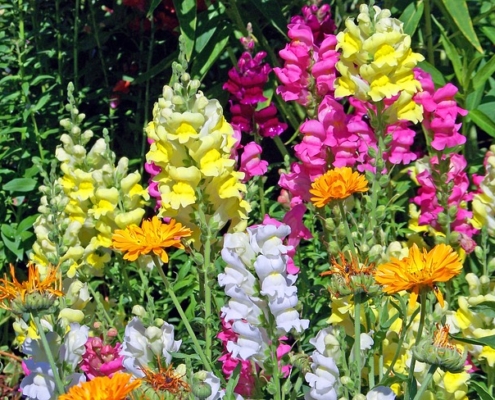IT’S ALL ABOUT THE SNAPDRAGON IN 2019

photo courtesy of pixabay
Wildflower Seeds
By Engrid Winslow
Snapdragons (Antirrhinum majus) are one of the most widely grown and well-known flowers in the garden for many reasons. Children adore them because of the distinctive bloom of the dragon’s head shaped flowers with mouths that open and close when squeezed from both sides. Many gardeners associate them with memories of their parents’ or grandparents’ gardens and they come in every color of the rainbow and beyond with shades from white to a purple so deep it almost looks black. They can be short or tall, bloom for a really long time and are easy to grow in full sun to part shade. Usually blooming in cooler weather in the spring and fall, they can bloom in hotter months if given additional water and deadheaded regularly. Snapdragons are useful as perennials because they often overwinter or as annuals in planters. They are a lovely addition to a cottage-style garden, pretty in bouquets and are not too fussy about soil type, although they do better with the addition of organic matter. They can even tolerate dry conditions. On top of all that, bumble bees love them and they are lightly fragrant. The National Garden Bureau has named the Snapdragon one of its 2019 plants of the year: ww.https://ngb.org/year-of-the-snapdragon/
Snapdragons are readily available as plants but they are so easy to grow yourself from seed if you decide to give them a try. They germinate better if placed in the freezer for a couple of days before planting and should be started sometime in February for spring planting. They do need light to germinate and since the seeds are tiny, press them into the top of the soil and water them from the bottom. They take 1 to 2 weeks to germinate and should be pinched back once they have 6-8 leaves to encourage a stronger stem. Plant your starts outdoors about the time of the last frost once they have been hardened off. https://bbbseed.com/care-planting-seedlings/
For additional helpful information about starting flowers and vegetables from seed check out this past blog: https://bbbseed.com/ez-indoor-seed-starting/



Leave a Reply
Want to join the discussion?Feel free to contribute!